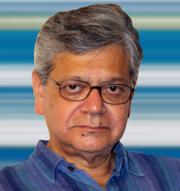

SUBIR ROY
THERE seems to be something seriously wrong with Indian Railways. In a two-month period ending July 2024 there were three major accidents. The worst railway accident in decades occurred in June 2023 when three trains collided in Odisha’s Balasore, leading to the deaths of 288 passengers.
As is to be expected, this has become a matter of political controversy with the opposition Congress pointing to 14 major train accidents in the ten years that the present dispensation has been in power at the Centre. The West Bengal chief minister has added to this by asking what kind of governance is in play.
Why have things come to such a pass? Running Indian Railways (the fourth largest national railways in the world with 1.2 million employees) is more than a full-time job and the minister in charge traditionally holds a senior position in the ministerial council. But what has drawn attention is Railways Minister Ashwani Vaishnaw being in charge of two additional ministries.
The opposition has pointed out that he does not have enough time to do justice to his railways job but this does not prevent him from being highly active on social media, earning the sobriquet of “reel minister”.
The railways are neglected in another critical way. Until lately, the railways used to merit having a separate budget. Now, in the general budget, with various ministries fighting for space, the railways get only passing mention.
As for financing, Indian Railways has over time been getting adequate resources but with particular emphasis on new projects. Industrial corridors are to come up across stretches in the south and the north — from Visakhapatnam to Bengaluru and Amritsar to Kolkata. This will add to important industrial infrastructure but in the process something else has been left by the wayside.
Investment in four operations — track renewal, doubling, gauge conversion and new lines — have seen a fall in allocation in the latest budget. New corridors are highly valuable but they cannot stand on their own. They have to be integrated into the existing infrastructure which has to be kept in good repair. Neglecting that will be counter-productive.
Even as there has been a succession of accidents, railway experts have focused extensively on Vande Bharat and other superfast trains in which well-heeled passengers travel in airconditioned comfort and in reclining seats. In contrast, most long-distance railway lines remain the same. Migrant workers inevitably travel in overcrowded, unreserved compartments in which it would be laughable to think of airconditioning.
Perhaps realizing that the sharp contrast was getting adverse publicity, the government has recently tried to make amends. It has announced that it will introduce 2,000 non-airconditioned trains on 25 popular routes in the next few months. This will be a blessing for workers travelling from Assam, Uttar Pradesh, Bihar and West Bengal to Gujarat, Delhi, Punjab, Maharashtra, Karnataka and Kerala.
While this programme will be widely welcomed, there is another vital programme which has not yet received all the resources it requires. It is named ‘Kavach’ which is a term that comes from Sanskrit, denoting a shield and armour. It is an advanced electronic system, named the automatic train protection (ATP) system, developed by Indian engineers to transform railway safety. It oversees train speeds and assists train operators in identifying signals which are in danger, ensuring safe operations even during challenging weather conditions.
Kavach operates by automatically applying brakes to trains if the driver does not respond promptly. It uses RFID (Radio Frequency Identification) tags placed along tracks and in station yards to determine track positions and train directions. When activated, trains within a five-km radius stop to ensure the safe passage of nearby trains.
During a successful test highlighted by Vaishnaw in 2022, Kavach demonstrated its ability to prevent rear-end collisions by automatically stopping a locomotive just 380 metres away from another in front.
But what is perhaps most unfortunate is that Kavach has made very slow progress. The latest economic survey indicates that there has been slow progress in particular on safety related work on automatic train protection and overhauling of signalling facilities at all stations.
The automatic train protection system has been deployed in a pitiful 2.14 percent of the total network and stations. Only eight of the 17 operational railway zones have become free from mechanical signalling.
The railways cannot be set right unless there is a management in place which is both competent and knows what it wants to do. Two years ago the government brought in place a new management system. The eight administrative cadres like traffic and engineering were all merged into one, the Indian Railway Management Services (IRMS). This was meant to end the practice of ‘departmentalization’ because of which members of a particular cadre running a department thought only in terms of that department and not the railways as a whole. Now, an IRMS probationer can be posted in any department and through his career be transferred to any, too.
The present reality is that the new system is yet to settle down. Plus, the immediate experience is that there is little clarity among the new entrants entering the civil service as to what the IRMS is all about. As a result, it is mainly those in the lower part of the civil list ranking that are entering the IRMS. All this does not bode well for the future of Indian Railways.
Subir Roy is a senior journalist based in Kolkata
Comments
Currently there are no Comments. Be first to write a comment!



